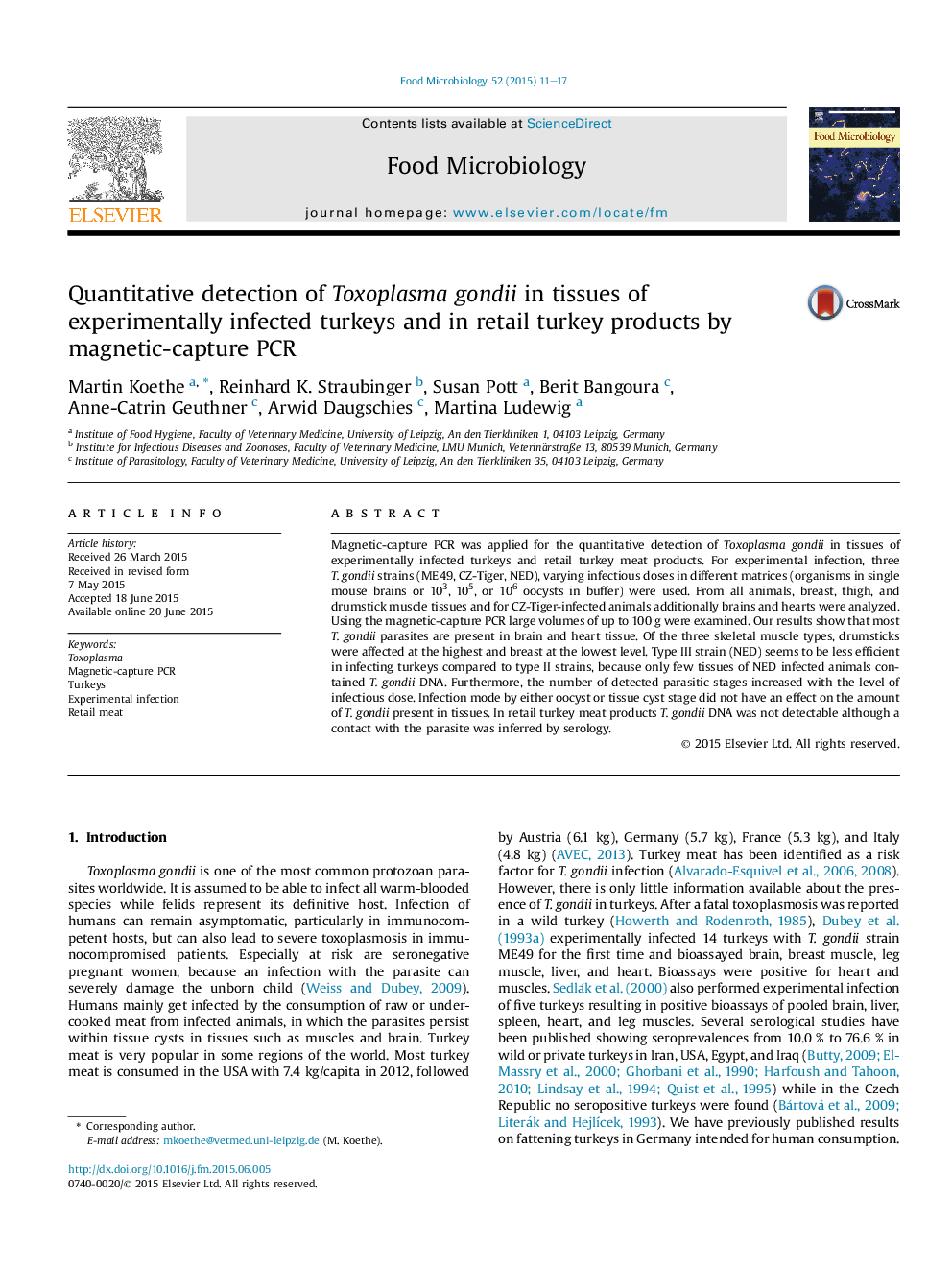| Article ID | Journal | Published Year | Pages | File Type |
|---|---|---|---|---|
| 6288433 | Food Microbiology | 2015 | 7 Pages |
â¢Successful application of magnetic capture PCR to large turkey meat samples.â¢Experimentally infected turkeys' brains and hearts are highest parasitized.â¢Higher infectious dose leads to higher DNA amounts in tissues.â¢NED strain induces less detectable DNA in tissues than type II strains.â¢No DNA found in seropositive fattening turkeys.
Magnetic-capture PCR was applied for the quantitative detection of Toxoplasma gondii in tissues of experimentally infected turkeys and retail turkey meat products. For experimental infection, three T. gondii strains (ME49, CZ-Tiger, NED), varying infectious doses in different matrices (organisms in single mouse brains or 103, 105, or 106 oocysts in buffer) were used. From all animals, breast, thigh, and drumstick muscle tissues and for CZ-Tiger-infected animals additionally brains and hearts were analyzed. Using the magnetic-capture PCR large volumes of up to 100 g were examined. Our results show that most T. gondii parasites are present in brain and heart tissue. Of the three skeletal muscle types, drumsticks were affected at the highest and breast at the lowest level. Type III strain (NED) seems to be less efficient in infecting turkeys compared to type II strains, because only few tissues of NED infected animals contained T. gondii DNA. Furthermore, the number of detected parasitic stages increased with the level of infectious dose. Infection mode by either oocyst or tissue cyst stage did not have an effect on the amount of T. gondii present in tissues. In retail turkey meat products T. gondii DNA was not detectable although a contact with the parasite was inferred by serology.
